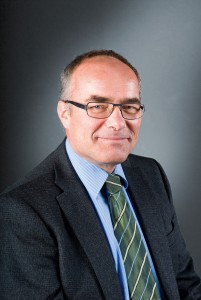
(Chief Editor Mining Report Glückauf)
Editorial
It is hard to imagine how the deep mining industry would function without access to the construction materials that are so essential for stabilising underground cavities. The formulation chosen for these products will differ significantly from one project to another according to the required setting properties and strength development. Given their importance for the operating efficiency of a mining undertaking, and for the safety of the underground personnel, these materials and the associated technology will provide the main focus for this edition of Mining Report Glückauf, which presents the latest developments in this field and describes some of the placement and installation techniques used.
Using backfill as a load-bearing support medium calls for a high-quality construction material that can be based, where possible, on the mining discard produced on site, as this will reduce the costs associated with spoil tipping and/or disposal. This issue will examine the sequence of operations involved in transforming mining residue into a pumpable backfill by using a potash mine as a case in point. The reactivity of waterglass with magnesium-based substances has provided the basis for the development of a new type of injection medium that provides for better cavity filling in conjunction with reactive material, thereby reducing the number of individual injections required. Another paper will examine the use of double reciprocating pumps for the transport of dense slurry. Various specific applications are presented involving a number of different pumping materials. The application of fibre-reinforced shotcrete is also discussed on the basis of experiences acquired during a roadway drivage operation carried out under difficult geological conditions at a chromium ore mine in Kazakhstan. The theme of “construction materials in the mining industry” is rounded off with the description of a special application for the formwork construction sector.
With the end of the national coal mining industry now only a few months away two of the contributions to the current issue examine developments in the automation of coal winning at the last two German collieries still in production. The paper on Prosper-Haniel colliery focuses on cutting winning while the article on Ibbenbüren mine covers stripping winning operations.
Other technical papers examine the state of digitisation in the mining industry, taking as an example the deployment of networked machines, the use of a twin-arm drill jumbo – originally developed for the deep mining sector – in a stone quarry and the current state of developments in modern belt conveying.
While issue number 2 of this year’s Mining Report Glückauf presented the current situation facing the German coal industry in 2017, it will next be the turn of the domestic lignite mining sector to come under the spotlight.
With my best regards
Dipl.-Ing. Andreas-Peter Sitte
Chief Editor Mining Report Glückauf, Essen